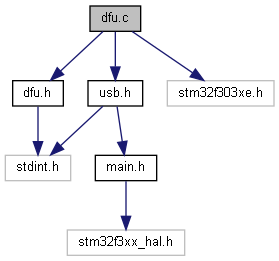 |
iSensor-SPI-Buffer
1.15
Firmware for the iSensor-SPI-Buffer board to enable full throughput buffered data capture on Analog Devices IMUs
|
 |
iSensor-SPI-Buffer
1.15
Firmware for the iSensor-SPI-Buffer board to enable full throughput buffered data capture on Analog Devices IMUs
|
Implementation file for iSensor-SPI-Buffer runtime firmware upgrade module. More...

Functions | |
| static void | ExecuteDFUBoot () |
| Executes a DFU reboot. More... | |
| void | DFU_Check_Flags () |
| Checks if a reboot into the DFU bootloader is needed. More... | |
| void | DFU_Prepare_Reboot () |
| Set DFU reboot flag in RAM and reset system. More... | |
Variables | |
| void(* | SysMemBootJump )(void) |
Implementation file for iSensor-SPI-Buffer runtime firmware upgrade module.
Copyright (c) Analog Devices Inc, 2020 All Rights Reserved.
| void DFU_Check_Flags | ( | ) |
Checks if a reboot into the DFU bootloader is needed.
This function should be the first called in the main routine. The less which is configured before entering DFU mode, the easier. This function checks for a DFU reboot flag set in a "no-initialize" section of SRAM to determine if booting into DFU mode is needed. This flag must be set by the application code on the prior run, when a bootloader reboot command is received.


| void DFU_Prepare_Reboot | ( | ) |
Set DFU reboot flag in RAM and reset system.
Resetting the system ensures the processor core is in a good state to load the bootloader on the next initialization. To run the bootloader, it is important that no interrupts are enabled, stack is cleared, processor is running from internal clock, and no hardware peripherals are active.

|
static |
Executes a DFU reboot.
